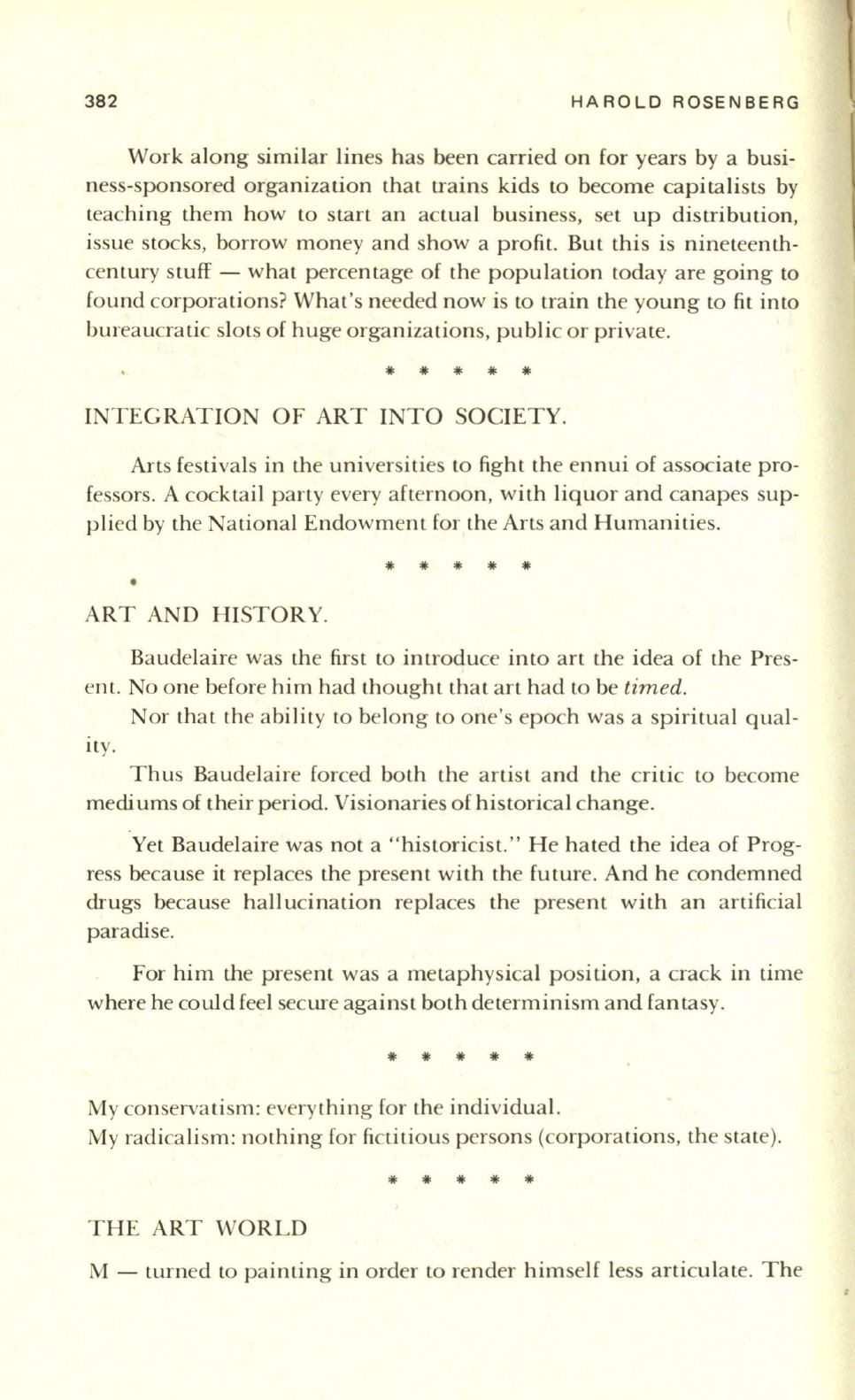
38 2
HAROLD ROSENBERG
Work along similar lines has been carried on for years by a busi–
ness-sponsored organization that trains kids
to
become capitalists by
teaching them how to start an actual business, set up distribution,
issue stocks, borrow money and show a profit. But this is nineteenth–
century stuff - what percentage of the population today are going to
found corporations? What's needed now is to train the young to fit into
bureaucratic slots of huge organizations, public or private.
.. >II
>II
.. >II
INTEGRATION OF ART INTO SOCIETY.
Arts festivals in the universities
to
fight the ennui of associate pro–
fessors. A cocktail party every afternoon, with liquor and canapes sup–
plied by the National Endowment for the Arts and Humanities.
>II
.. .. .. >II
ART AND HISTORY.
Baudelaire was the first
to
introduce into art the idea of the Pres–
ent. No one before him had thought that art had to be
timed.
Nor that the ability
to
belong
to
one's epoch was a spiritual qual-
ity.
Thus Baudelaire forced both the artist and the critic to become
medi urns of their period. Visionaries of historical change.
'Yet Baudelaire was not a "historicist." He hated the idea of Prog–
ress because it replaces the present with the future. And he condemned
drugs because hall ucination replaces the present with an artificial
paradise.
For him the present was a metaphysical position, a crack in time
where he could feel secure against both determinism and fantasy.
.. >II
.. .. ..
My conservatism: everything for the individual.
My radicalism: nothing for fictitious persons (corporations, the state).
>II
.. >II
>II
>II
THE ART WORLD
M - turned to painting in order
to
render himself less articulate. The


